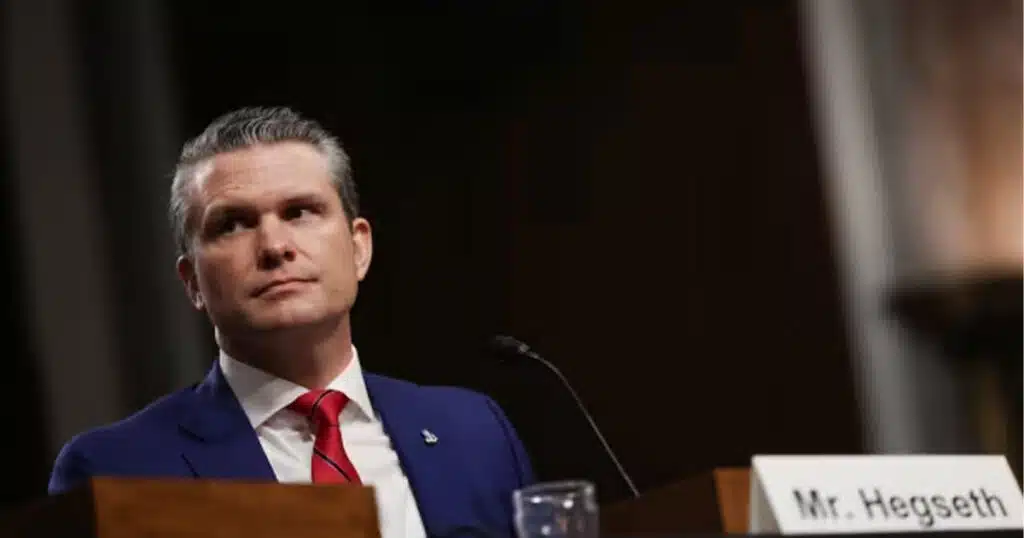
NATO and the Future of European Security: The German Question
Four years ago, it would have been hard to believe that U.S. relations with its European NATO allies would reach another inflection point. Much of the current flux stems from the changing power distribution in Europe, as the Trump administration prioritizes the Indo-Pacific theater and has signaled in no uncertain terms that Europe must take responsibility for most of its security and defense tasks. This new form of American “benign neglect” has translated into pressure on Europe to rearm but has thus far lacked a larger strategic concept for how the relationship with the European allies ought to evolve going forward. Such unprecedented lack of guidance from Washington has left NATO defaulting to the intra-European dynamic as the principal structuring driver of change. Simply put, while the European allies have committed to spending 5% of GDP by 2035, the politics of the alliance has become by default the purview of the Europeans, especially Germany.
A rapidly shifting internal power dynamic on the continent is now unequivocally favoring Germany, with Berlin working to bring Paris and London onboard to form what it expects to be the core of the new European security architecture – the “E3 Directorate” poised to become the center of Europe’s new security system. We are witnessing a de facto structuring of the European NATO into its core and periphery, with countries along the eastern frontier falling fast into the latter category. If successfully finalized, this fundamental shift will allow Germany to align the security architecture of Europe with its ongoing effort to centralize the European Union through a new Union Treaty. Unlike earlier French efforts that pushed for “strategic autonomy” and thereby pitted EU security policy against U.S. priorities, Berlin’s E3 Directorate approach—if successful—would leverage the structures of the NATO alliance alongside the ongoing transformation of the European Union, while at the same time laying the groundwork for a future security architecture should America’s presence in Europe continue to shrink. The end game may be a systemic transformation, whereby Berlin will be poised to assume leadership not only in the economic domain, where it has dominated Europe for decades, but also in the military sphere, positioning Germany for a run for great power status reinforced by the combined resources of an institutionally harnessed Europe.
This has significant implications for the future of NATO, for at a time when the alliance should be coming together to face the growing threat from revisionist Russia and its allies in Beijing, Tehran, and Pyongyang, the interests of the German industry, which remains critically dependent on the Chinese market, will inevitably register in the internal alliance politics. The larger question is whether the E3 format propounded by Berlin will fracture the alliance between Europe’s new core and the once-more peripheral zones of Europe, especially those most exposed to Russian pressure in the East. It is unlikely that the Northeast Corridor, i.e., Norway, Sweden, Finland, the Baltic States and Poland, will willingly accept such a reordering of Europe’s security architecture, especially as the announced rearmament of Germany progresses apace, shifting the overall military balance across the continent in Berlin’s favor and with it the ability to influence decisively the continent’s security policy and its relations with the United States, Russia and China.
Such internal fracturing in Europe is largely due to the absence of a clear U.S.-Europe strategy from Washington, as well as the Trump administration’s earlier decision to reset relations with Russia combined with its vocal criticism of Europe for its persistent failure to spend on defense. Pushing Europe to correct its deficits in defense spending, as the administration has correctly done, is not the same as having a clear vision of Europe’s role in the U.S. strategy for the gathering global confrontation with China and Russia. As a result, today NATO – an alliance that has been a quintessential force multiplier for the U.S. – is at a risk of becoming hollowed out and rendered irrelevant when it comes to U.S. national security and defense priorities. In fact, it is now poised to become a pathway for Germany to develop a new security architecture in Europe that will factor in a declining U.S. presence as the principal security provider. To assert this may seem counterintuitive in light of the resounding declarations committing Europeans to spend 5% of GDP on defense by 2035, but such declarations of intent that are a decade removed are just that: declarations.
There is a larger driver behind this transformation of European politics that most U.S. analysts, preoccupied with legacy institutional framing and numerical data, have consistently overlooked, i.e., the return of traditional geopolitical determinants shaping European security for the first time since the end of the Cold War. Over the last three decades Europe has been revisiting the historical verities from its past, starting with the Balkan wars of Yugoslav succession through the 2014 Russian seizure of Crimea to the 2022 second Ukraine war. The principal driver of this change is the reconfiguration of Europe’s map following Russia’s withdrawal from Central Europe in the aftermath of the Cold War, and Putin’s determination to return Russia to Europe as a key player, with its own sphere of dominance in Eastern Europe and a deal with Berlin that would again grant it a say over the future of Central Europe. This has manifested itself in Moscow’s insistence that America leave Central Europe, as was clearly indicated in its call to return to the 1997 status quo just before its attack against Ukraine in 2022. Hence, how Berlin shapes its Russia policy going forward will prove decisive to the emerging security architecture in Europe.
The key question NATO’s future is whether the United States will remain engaged on the continent and how German-Russian and German-Chinese relations will evolve going forward. To understand the reasons behind this change, one must revisit the basics of European geopolitics and Germany’s place in it. During the Cold War Germany was the key frontier state of NATO. Brought into the alliance a mere decade after the end of the Second World War, it endured as a main battle ground between NATO and the Warsaw Pact. The Bundeswehr provided the bulk of European conventional fighting power, while Germany remained the host to an extensive network of U.S. military installations built to train and support the mission. The positioning of U.S. bases in Germany ensured the trip wire effect in the event Moscow decided to launch an attack across the NATO fence. It also served to define Germany’s standing as a quintessentially transatlantic power.
The U.S. relationship with Germany seems to hold the key to the future of NATO. No country saw a more radical change in its relations with the United States than Germany, which after the visit to the White House by Chancellor Friedrich Merz, positioned itself as the favorite European partner and a natural leader of America’s European allies – a position that seems to have been largely accepted in Washington. This is a dramatic change for Berlin, considering that only months prior following the Munich Security Conference Merz had called for Europe’s greater independence from the United States and warned that NATO might soon become extinct.[i] Such positioning also hedges against any sudden changes in U.S. policy towards NATO and the transatlantic alliance. Berlin has committed to deliver on its plans to rearm, building up from the skeletal divisions it currently fields, including its earlier commitment to form a territorial defense division,[ii] which was announced in January of this year. And Germany’s rearmament will inevitably go hand-in-hand with a resurgence of the country’s defense industry, especially if the European Union successfully implements the rule of sourcing the majority of weapons and ammunition from Europe’s defense industry – a move that will favor Germany and, to an extent, France. Such a rapid rearmament of Germany will fundamentally change the overall military balance in Europe, for neither France nor the United Kingdom can match Berlin’s projected defense expenditures. In short, as the United States’ footprint in Europe contracts – and the ongoing posture review is likely to result in fewer U.S. troops on the Continent – Germany’s outsized military posture relative to others in NATO and the EU will translate into outsized political influence in shaping the future of Europe.
The question is what Berlin’s priorities are likely to be going forward. Since the end of the Cold War, Germany has undergone a halting but steady transformation from the Adenauerian transatlanticist state that was once the key continental ally of the United States, to a Mitteleuropa country tracking to become the center of power in continental Europe and looking for new economic, political and, ultimately, security alignments that could allow it to chart a course independent of the United States. Though never openly articulated, the “non-U.S. option” has remained a constant in Germany’s post-Cold War politics, whereby Berlin sought to aggregate ever more closely other EU member states, and to build ever-closer economic and political ties with Russia and China. The now-discredited Berlin-Moscow axis has been especially prominent in the last twenty years, with its origins in the tenure of Gerhard Schroeder and the sixteen years of Angela Merkel’s tenure as Chancellor marking its high point when the two Nord Stream pipelines project epitomized the final consummation of the erstwhile Ostpolitik. Although the Schroeder/Merkel policy ultimately failed, had Vladimir Putin not launched his second invasion of Ukraine in 2022, the Moscow-Berlin realignment would have likely proceeded to its endpoint, with Russia serving as the principal supplier of energy to Europe and Germany the principal distributor of Russian natural gas.
Germany’s China policy is arguably even a clearer indicator of how it sees its future relations with the United States. While Russia was – and may in the future become yet again – the principal supplier of cheap energy to fuel Germany’s manufacturing base, China has over the years become the largest market for German products and the largest source of subcomponents for its industry. For fifteen years prior to 2024, China was Germany’s number one trading partner, unseated by the U.S. when Berlin recorded the largest trade surplus with Washington in its history.[iii] Faced with the tariffs imposed by the Trump administration against the EU, and with China seeking to offset losses in its exports to the U.S., the enticement of preserving and expanding economic relations with China has been all but irresistible for Berlin, putting it on a collision course with the United States as Washington gears up for a trade war with Beijing. The EU’s talk of “derisking” its trade relations with China, as opposed to “decoupling” critical supply chains from China which has been increasingly the watchword in Washington, is likely the last line of compromise that Berlin – and by extension Brussels – will pursue as it seeks a deal that would allow it to remain in the Chinese market and limit the negative impact to its relations with Washington.
In short, U.S. relations with Europe are in their current disarray not only because of the Trump administration’s lack of a clear strategy for Europe, but also because on the other side of the Atlantic the vital national interests of the largest European economy and the host to U.S. military installations are increasingly diverging from America’s. At the very least, Berlin is hedging to ensure it has options in the event America gets pulled into the Indo-Pacific theater. The new “German question” requires two answers: one from Berlin that provides clarity of intent, and the other from Washington that communicates how it sees its relations with Europe’s largest economy and its most populous state. And by extension, how Washington sees its relations with other NATO countries, especially with those in the Northeast Corridor facing a direct Russia threat to their security and sovereignty. Right now, the Merz government seems determined to smooth over differences with the Trump administration, positioning Germany as the preferred ally of America. But the real test will come in the economic domain, when Washington’s determination to decouple from China is confronted by Berlin’s conviction that the best it can do is to “derisk” its presence in the Chinese market while remaining committed to staying there. This aspect, more than the question of how to deal with Russia, will shape the future of U.S.-German relations and, by extension, provide an answer to the new German question about the country’s strategy for Europe and its role in transatlantic relations.
Andrew A. Michta is Senior Fellow at the Scowcroft Center for Strategy and Security at the Atlantic Council of the United States. Views expressed here are his own.
Notes:
[i] Germany’s Merz vows ‘independence’ from Trump’s America, warning NATO may soon be dead – POLITICO
[ii] Germany to Form Territorial Defense Division to Protect Critical Infrastructure — UNITED24 Media
[iii] U.S. Overtakes China as Germany’s Top Trade Partner | SupplyChainBrain
This article was originally published by RealClearDefense and made available via RealClearWire.



